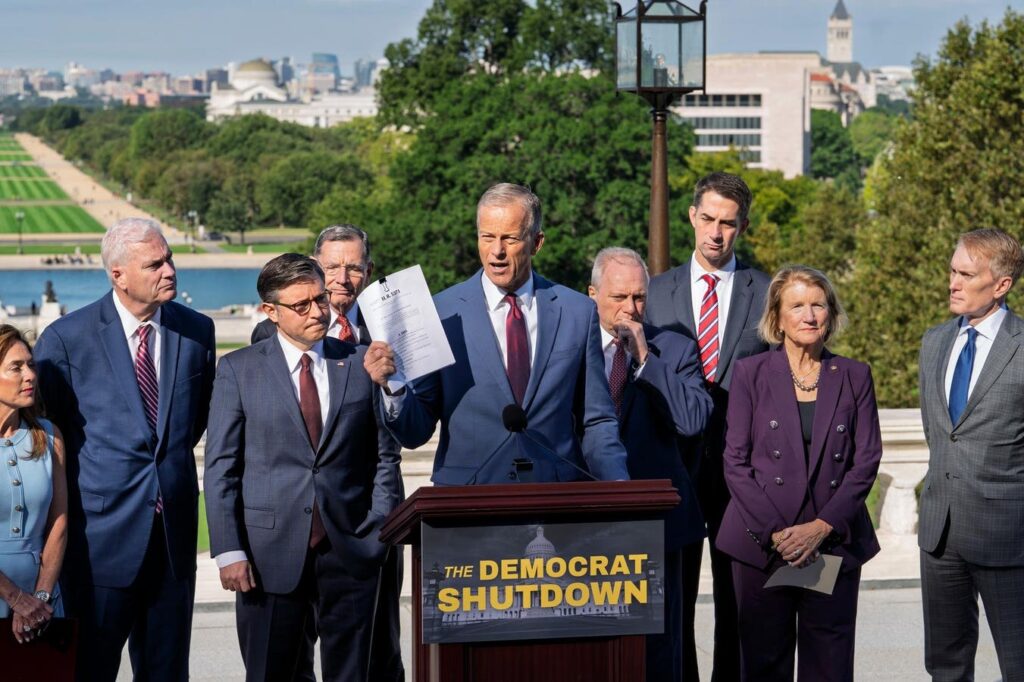A budget standoff in Congress has left the Small Business Administration unable to approve new loans. (AP Photo/J. Scott Applewhite)
Copyright 2025 The Associated Press. All rights reserved
The federal government shut down at midnight on Oct. 1 after Congress failed to reach a funding deal. Republicans and Democrats remain deadlocked over whether to extend enhanced Obamacare subsidies, scheduled to expire at the end of the year.
Essential services continue. Medicare and Medicaid keep running because they’re funded outside annual appropriations. The military, law enforcement, and air traffic control remain on duty without their people getting paid until the shutdown ends. The Postal Service stays open since it funds itself. The courts and IRS can operate for only a limited time before cutbacks take hold.
The Small Business Administration (SBA) is another story. A good rule of thumb in shutdowns applies: if the government writes checks, it’s closed; if the government cashes checks, it’s open. The agency furloughed about a quarter of its staff. Approvals for new 7(a) and 504 loans—its bread-and-butter programs—are suspended. That means small businesses can’t get government-backed financing to buy property, purchase equipment, or expand operations.
Bob Coleman, publisher of the Coleman Report, a trade publication for SBA lenders, says most banks can work around the disruption for a time. Deals that already have SBA tracking numbers can still close once the paperwork is complete. Lenders can keep underwriting, ordering appraisals, and preparing files in anticipation of the shutdown ending. But they can’t finalize new SBA guarantees until the government reopens. In his words, it’s an inconvenience if the stoppage lasts a couple of weeks. Once it drags past 30 days, that’s when it turns into something more serious.
For lenders, the biggest pain point is new approvals. Banks can’t finalize SBA guarantees that weren’t yet put into the SBA system. Certified Development Companies that process 504 loans are also sidelined. Even microloans to nonprofits stop. The secondary market, where lenders resell guaranteed portions of SBA loans to investors, also loses government support. Normally, the SBA contracts with a third party to handle the flow of payments – collecting from borrowers, passing funds to investors, and just generally making sure everyone gets paid. Roughly half of SBA loans rely on that market to recycle capital, according to Coleman. Without it, community banks and nonbank lenders could face tighter balance sheets should an agreement not be reached sooner rather than later.
What continues is loan servicing–and the requirement that those with SBA backed loans make their payments. Borrowers who default will still face foreclosure or collection. On the oversight side, the SBA’s Office of Credit Risk Management trims back to emergencies only. Normally that office reviews whether banks followed the rulebook on appraisals, equity injections, and citizenship checks for borrowers. During a shutdown, those routine exams stop unless there’s an “imminent loss” that threatens the agency’s balance sheet.
The Office of Capital Access, which supervises lenders more broadly, sees its reviews mostly go dark. In normal times, it dispatches teams to do what amounts to audits of bank portfolios. Examiners look through loan files to confirm lenders documented collateral, verified down payments, and screened borrowers against federal watchlists. If they find problems, the office can require fixes, levy penalties, or in extreme cases push to suspend a lender from the program. For now, those reviews are postponed unless they’re deemed urgent. Coleman says the effect is mostly a backlog—audits get rescheduled, not erased.
That leaves SBA lending in limbo. Short shutdowns cause delays but don’t derail many deals. If the freeze extends much beyond 30 days, though, the damage compounds. Deadlines slip. Real estate closings stall. Lenders stuck with loans they can’t sell could run into liquidity issues.
Of course the Trump SBA blames Democrats for the impasse. Democratic leaders blame Republicans. What isn’t up for debate is the cost of a stalled agency: the SBA itself estimates that 320 small businesses and roughly $170 million in SBA-backed financing won’t get out the door each and every day of the shutdown.
More from Forbes
Read the full article here


